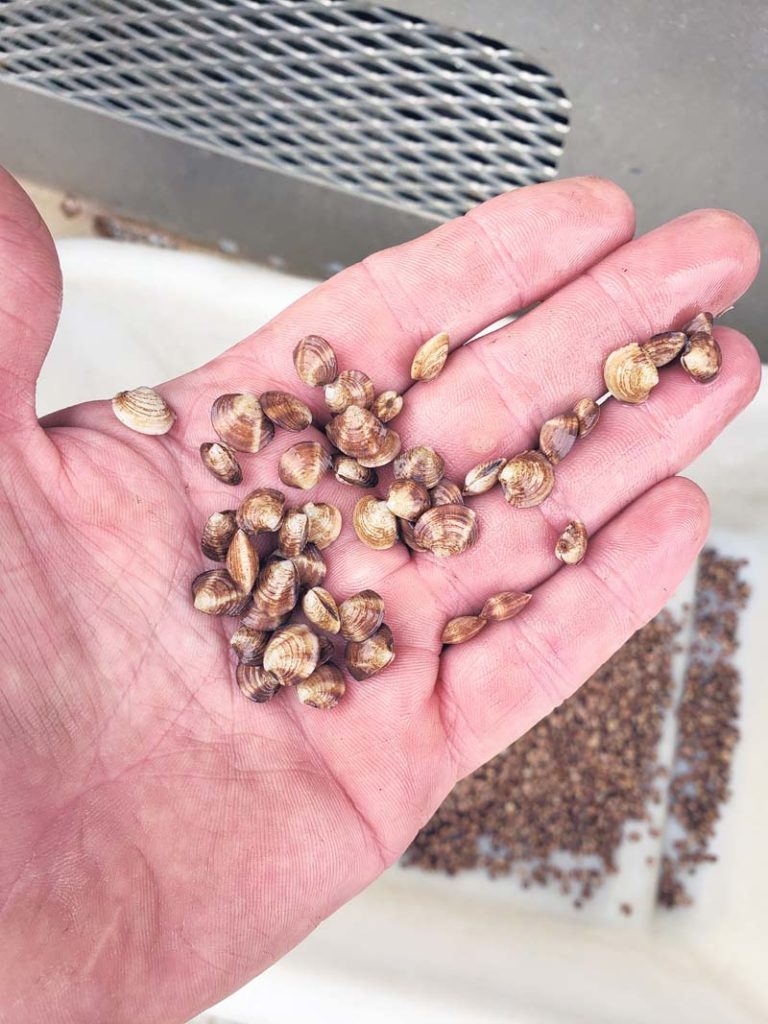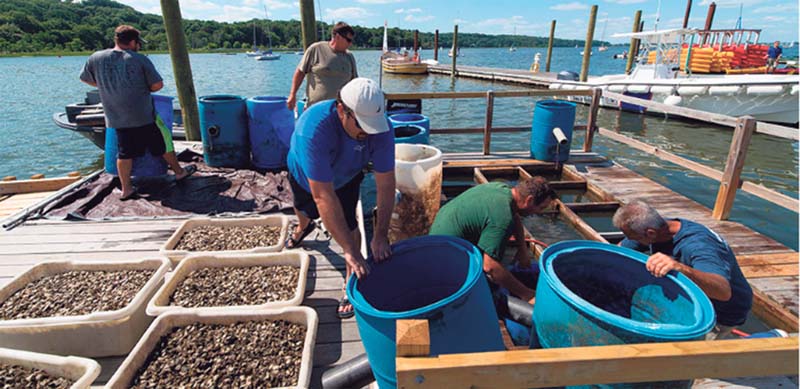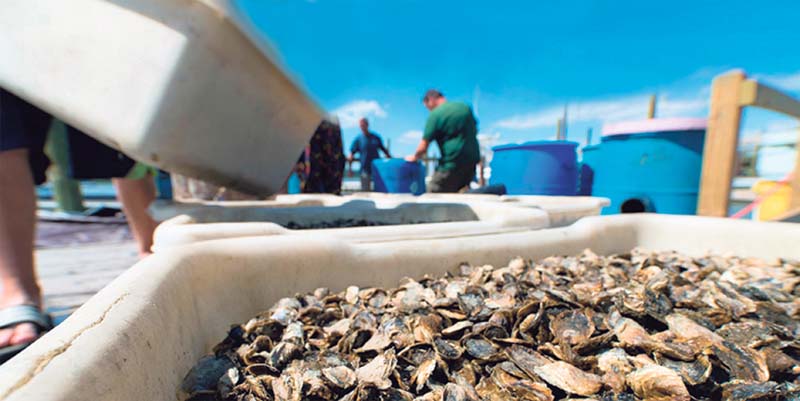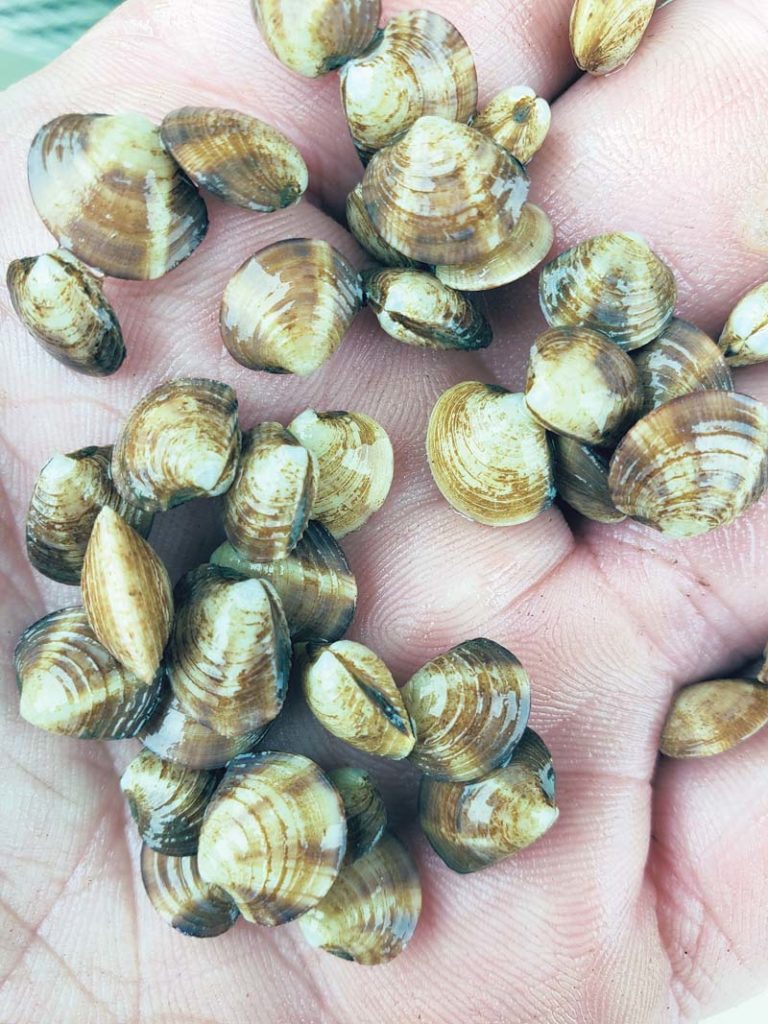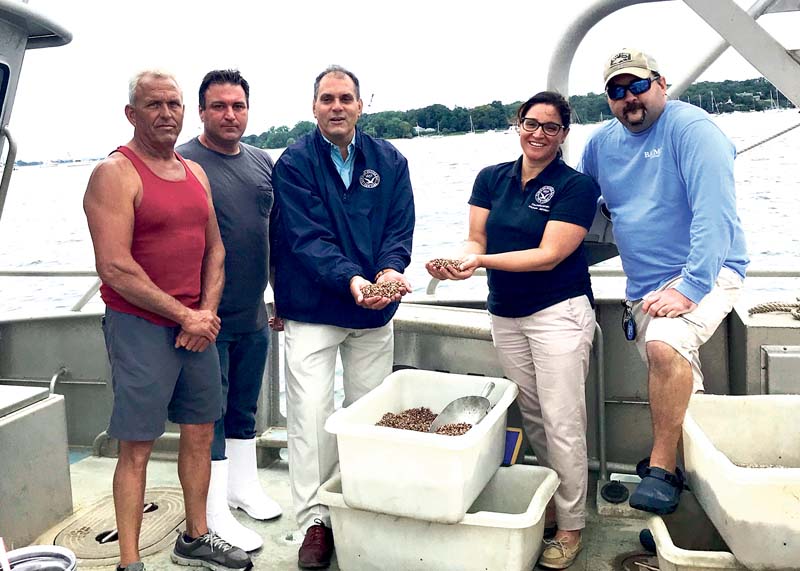
The health of Oyster Bay Harbor is vital to the community at large, particularly as the harbor has a long history of being a bountiful source of shellfish. In recent years, however, the population of shellfish has dwindled, so the Town of Oyster Bay has stepped in to assist with replenishing it on a yearly basis. Earlier this month, town officials and volunteers from the North Oyster Bay Baymen’s Association (NOBBA) spent part of an afternoon seeding Oyster Bay Harbor with one million clam seeds.
“We’ve been doing this annually with the town for about 15 years,” said Doug Rodgers, vice president of the NOBBA, noting that the Baymen also grow about 1-2 million clams per year and 1-2 million oysters per year in order to help replenish the populations in Oyster Bay Harbor. “We’re active in protecting and restoring the harbor and are in the process of getting a hatchery built.”
He added that the current administration has been very helpful with their initiative.
“Oyster Bay Harbor is one of the crown jewels of Oyster Bay, and I’m proud to say that under my administration we are now doing more than ever before to improve its water quality,” said Supervisor Joseph Saladino. “This clam seeding initiative improves water quality, bolsters the local economy and improves the resiliency of our coastal communities by restoring shellfish populations to the harbor.”
Part of the seeding initiative has included the building a shellfish dock called a floating upweller system (FLUPSY). The float is operated by the Baymen on a volunteer basis to increase shellfish populations in Oyster Bay; in a FLUPSY shellfish grow twice the normal rate. Since 1999, NOBBA, has raised over four million shellfish per year.
Rodgers said the NOBBA try to grow shellfish to the largest size possible before seeding the harbor, and they usually pick spots where the survival rate is higher, such as the harbor which has a shelly, hard bottom that they can burrow into more quickly and not be as much at risk for being buried in the sand or eaten by crabs or snails.
According to Rodgers, the need for shellfish seeds is a crucial step in restoring life in the harbor, though he also said that it’s important to maintain a balance in the bay while fishing.
“We look at the bay as one big ecosystem,” Rodgers said. “It’s more than just clams and oysters.”
The Baymen are independent shell fishermen who harvest hard clams, steamer clams and oysters by hand raking in waters from five to 60 feet deep. They work year-round, regardless of weather, to supply their buyers with the freshest shellfish possible. The history of harvesting shellfish in the harbor dates back to the Lenape Indian, who used the shellfish not only for food, but also for currency, tools and jewelry. The Native Americans sold their land to Dutch settlers in the 1600s, and by the mid-1800s, oysters had become the main source of protein for New Yorkers, rather than beef, according to the NOBBA. Shellfishing in the harbor became a way of life for many, who then passed the tradition down to their children. Understanding the balance is an important aspect of sustainability.
In Rodgers’ view, some farmers do not farm their shellfish in a sustainable way.
“While using large boats is more efficient, it’s also damaging the harbor,” he said. “Our side [the public side] has become progressively worse over the past 10 to 12 years, so we try to do more to make the future better for ourselves and our children.”
A short documentary has been made about the plight of the Baymen, called The Bay of Imbalance, which can be found at www.oysterbaymen.com.
Councilwoman Michele Johnson noted that shellfish filter up to 50 gallons of water a day through their feeding process, so the preservation of Oyster Bay Harbor’s water quality through the repopulation of shellfish is an important component of making the water cleaner for swimming, fishing, boating and all life in the harbor.
“I am proud to be a part of such a great environmental initiative that will preserve the quality, resiliency and natural beauty of our local waterways for generations to come,” Johnson said.



